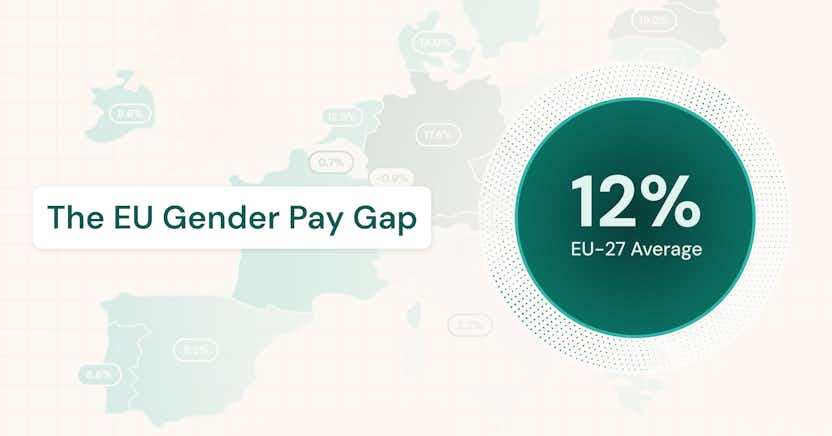What Is the Gender Pay Gap?
The gender pay gap refers to the percentage difference between the average earnings of men and women, typically measured across an entire organization, sector, or labor market. It is a high-level metric used to highlight broad disparities in pay that may stem from a range of structural and systemic factors. Unlike the concept of equal pay—which focuses on ensuring that individuals doing the same or equivalent work receive the same compensation—the gender pay gap captures aggregate differences that reflect occupational segregation, leadership representation, work patterns, and access to advancement opportunities.
The gender pay gap is commonly represented as the percentage difference between average male earnings and average female earnings. For example, a gender pay gap of 20% means that, on average, women earn 80 cents for every dollar earned by men. The metric can be calculated using mean or median earnings and may be reported across different job levels, business units, or countries.
Why is the gender pay gap important?
The gender pay gap is an essential indicator of workforce equity and fairness. While the existence of a pay gap does not necessarily indicate direct discrimination, it often points to underlying imbalances in the structure of work and access to opportunity. As such, it plays a critical role in diagnosing gender inequality and prompting organizational and policy reforms.
For organizations, understanding and addressing the gender pay gap is increasingly tied to:
- Regulatory compliance, especially in jurisdictions with mandatory pay reporting or transparency laws.
- Corporate reputation, as investors, customers, and employees scrutinize diversity and equity performance.
- Talent strategy, since fair pay and equal opportunity are critical factors in attracting and retaining diverse talent.
- Risk mitigation, particularly with regard to litigation, employee dissatisfaction, or reputational harm.
In both the U.S. and Europe, the gender pay gap has become a focal point of regulatory and public attention. In the European Union, the EU Pay Transparency Directive mandates regular reporting on pay gaps, while in the U.S., several states and cities require employers to disclose pay ranges or file pay data reports by gender and race. While the U.S. has no national requirement for employers to report on pay gaps, the Equal Employment Opportunity Commission (EEOC) does require many U.S. companies to report key demographic and pay data
Dimensions of the gender pay gap
The gender pay gap is not a single, uniform figure—it varies by geography, industry, job level, and demographic group. A thorough analysis requires understanding the multiple dimensions of the gap.
An important distinction is made between between the unadjusted and adjusted pay gaps:
- Unadjusted gender pay gap, which compares average earnings without accounting for differences in roles, tenure, education, or hours worked.
- Adjusted gender pay gap, which attempts to control for these factors to isolate the portion of the gap that cannot be explained by observable differences.
The unadjusted gap is typically larger and more indicative of systemic disparities in workforce composition, while the adjusted gap is useful for assessing potential discrimination in pay practices.
Other important factors that influence the gender pay gap include:
- Occupational segregation: Women and men may be concentrated in different roles or functions, some of which command higher compensation.
- Vertical segregation: Women may be underrepresented in senior leadership positions, which are often associated with higher pay.
- Work patterns: Differences in full-time versus part-time work, career interruptions due to caregiving, or flexibility demands may affect average earnings.
- Negotiation dynamics and pay-setting practices: Gender differences in negotiation outcomes and initial salary offers can compound over time.
Why should organizations address the gender pay gap?
Beyond meeting regulatory compliance requirements, taking proactive steps to close the gender pay gap is both a business advantage and a signal of organizational maturity. When employers commit to fair and equitable compensation, they create an environment where employees feel valued, motivated, and aligned with the company’s values. This in turn enhances performance, retention, and brand reputation.
Organizations that actively work to close the gender pay gap can:
- Attract and retain high-performing talent who prioritize fairness and transparency.
- Strengthen compliance with current and future pay transparency regulations.
- Enhance their employer brand among diverse candidates and current employees.
- Demonstrate accountability and earn trust from investors, customers, and stakeholders.
By embedding pay equity into their broader people and compensation strategies, organizations position themselves for sustainable, inclusive growth and a more engaged, high-performing workforce.
Who is affected by the gender pay gap?
The gender pay gap impacts a broad range of stakeholders, both within and beyond the organization. At the individual level, women may experience long-term financial disadvantages, including lower lifetime earnings, reduced retirement savings, and limited access to leadership roles. These effects are particularly pronounced for women of color, disabled women, and other groups facing intersecting inequalities.
For employers, the gender pay gap affects workforce dynamics and organizational performance. It may reflect underutilization of talent, uneven access to mentorship or promotion, and potential biases in pay-setting. HR, finance, and executive teams all share responsibility for identifying and addressing the drivers of the gap.
On a societal level, the gender pay gap contributes to economic inequality and reduces national productivity. Addressing it can boost GDP, improve labor force participation, and enhance overall economic resilience.
What are common approaches to measuring and addressing the gender pay gap?
Organizations seeking to understand and close the gender pay gap often begin with a pay gap analysis. This involves collecting and analyzing compensation data by gender, typically broken down by role, level, location, and other relevant variables.
There are two primary approaches to this analysis:
- Descriptive analysis, which quantifies the average or median pay gap and identifies patterns across different business units or demographics.
- Regression analysis, which adjusts for factors like role, experience, or education, and isolates unexplained differences that may reflect bias.
These analyses may be conducted internally or with the support of external consultants or software platforms. Increasingly, organizations use compensation management and pay equity technology to automate data collection, model different scenarios, and track progress over time.
Beyond measurement, organizations must implement targeted actions to reduce the gap. These may include:
- Reviewing and standardizing compensation and promotion processes to reduce discretion and bias.
- Conducting regular pay equity audits and making data-informed adjustments.
- Implementing policies to support equitable advancement, such as flexible work, parental leave, and inclusive leadership development.
- Increasing transparency around pay ranges and criteria for advancement.
How is the gender pay gap different from equal pay?
While related, the gender pay gap and equal pay are distinct concepts. Equal pay refers to the legal and ethical requirement to pay individuals equally for the same or equivalent work, regardless of gender. This principle is enshrined in legislation in both the U.S. (e.g., Equal Pay Act) and EU member states.
The gender pay gap, by contrast, is a broader metric that captures average earnings differences across the workforce. It reflects both equal pay issues and structural factors, such as who holds which jobs and how work is organized.
A company may be fully compliant with equal pay laws while still exhibiting a significant gender pay gap—often due to unequal representation in higher-paid roles. Conversely, closing the gender pay gap generally requires a holistic strategy that addresses both pay equity and organizational dynamics.
How can you evaluate progress on closing the gender pay gap?
To evaluate the effectiveness of gender pay gap initiatives, organizations must look beyond a single year’s numbers. Progress is often incremental and must be understood in the context of workforce changes, market trends, and organizational strategy.
Key metrics and indicators include:
- Changes in median and mean gender pay gaps over time.
- Representation of women in leadership and high-paying roles.
- Rate of promotions and salary increases by gender.
- Completion and outcomes of pay equity audits.
- Employee perceptions of fairness and transparency, measured through engagement surveys.
Regular reporting, both internally and externally, helps maintain accountability and align stakeholders around shared goals. In the EU, many employers are required to publish this data annually, while in the U.S., public companies may face growing pressure from investors and regulators to disclose gender pay metrics.
What are best practices for reducing the gender pay gap?
Organizations that have successfully narrowed their gender pay gaps typically adopt a sustained, multi-pronged strategy. Best practices include:
- Establishing leadership accountability for gender equity goals.
- Embedding pay equity considerations into compensation planning cycles.
- Providing training on inclusive management, pay decisions, and bias mitigation.
- Using structured pay and promotion criteria to reduce subjectivity.
- Creating transparent career paths and tracking internal mobility by gender.
- Ensuring that flexible work and caregiving accommodations do not negatively affect career progression.
Technology platforms can support these efforts by providing visibility into pay data, streamlining equity reviews, and supporting scenario modeling.
Frequently asked questions (FAQs) about the gender pay gap
1. Is the gender pay gap always a result of discrimination?
Not necessarily. The pay gap often reflects structural differences in representation or job roles. However, unexplained gaps may point to discrimination or inequitable practices.
2. What is the difference between the adjusted and unadjusted gender pay gap?
The unadjusted gap looks at average earnings across all employees, while the adjusted gap controls for factors such as job level, experience, or hours worked.
3. Is the gender pay gap the same in every country?
No. The size and drivers of the gender pay gap vary significantly by country, influenced by cultural norms, labor laws, childcare systems, and levels of female labor force participation.
4. How often should organizations conduct a gender pay gap analysis?
At minimum annually, especially in jurisdictions with reporting requirements. Many organizations conduct more frequent internal reviews aligned with compensation cycles.
5. Can technology help reduce the gender pay gap?
Yes. Compensation and pay equity platforms can help identify pay disparities, model adjustments, and ensure fairness in pay and promotion decisions.
Summary
The gender pay gap is a critical indicator of fairness and equity in the workplace. While it is influenced by many factors, it remains a valuable lens for understanding how opportunity and reward are distributed. For compensation and benefits practitioners, addressing the gender pay gap requires accurate data, structured processes, and a long-term commitment to equity. Technology plays an increasingly important role in enabling these efforts, allowing organizations to :move from compliance to strategic transformation.






